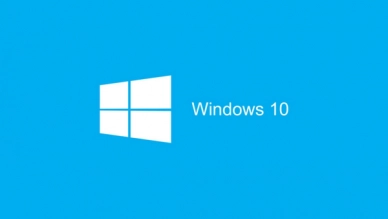Interface in Object-Oriented Programming (OOP)
I. Understanding Interface in Object-Oriented Programming (OOP)
1. What is an Interface?
An Interface in object-oriented programming is a template that allows you to specify which methods a class must implement.
Interfaces facilitate the use of different classes in the same manner. When one or more classes use the same Interface, it is referred to as polymorphism.
To declare an interface in PHP, we use the interface keyword.
Example
interface Person {
public function getInfo();
public function getInfo($name, $gender);
public function getInfo() : string;
}
2. How to Use an Interface
To implement an Interface, a class must use the implements keyword.
A class that implements an Interface must implement all of its methods.
Example
interface Animal {
public function makeSound();
}
class Cat implements Animal {
public function makeSound() {
echo "Meow";
}
}
$animal = new Cat();
$animal->makeSound();
3. Characteristics of an Interface
An Interface is not an object, hence you cannot instantiate an Interface.
Example
interface Animal
{
//
}
//FALSE because the interface cannot be initialized
$dog = new Animal();
In an Interface, you can only declare methods, but you cannot define them.
Example
interface Animal
{
// CORRECT because we only declare methods in an interface
public function setName();
// INCORRECT because we cannot define methods in an interface
public function getName()
{
//
}
}
In an Interface, you can declare constants but cannot declare variables.
Example
interface Animal
{
// CORRECT because constants can be declared in an interface
const AGE = 100;
// INCORRECT because variables cannot be declared in an interface
// public $name;
}
Classes that implement an Interface must declare and define all the methods present in that Interface.
Example
interface Animal
{
public function getName();
}
// This class is CORRECT because it has declared and defined the getName() method from the interface
class Dog implements Animal
{
private $name;
public function getName()
{
return $this->name;
}
}
// This class is INCORRECT because it has not declared and defined the getName() method from the interface
class Cat implements Animal
{
private $name;
public function setName($name)
{
$this->name = $name;
}
}
A class can implement multiple interfaces.
Example
interface Animal
{
public function getName();
}
interface Lion
{
public function checkDie();
}
class Tiger implements Animal, Lion
{
private $name;
const IS_DIE = false;
public function getName()
{
return $this->name;
}
public function checkDie()
{
return self::IS_DIE;
}
}
Interfaces can inherit from each other.
Example
interface Animal
{
public function getName();
}
interface Lion extends Animal
{
public function checkDie();
}
class Tiger implements Lion
{
private $name;
const IS_DIE = false;
public function getName()
{
return $this->name;
}
public function checkDie()
{
return self::IS_DIE;
}
}
II. Comparing Interface and Abstract Class
1. Differences Between Interface and Abstract Class
- Interfaces cannot have properties, while abstract classes can.
- All methods in an Interface must be public, while methods in an abstract class can be public or protected.
- All methods in an Interface are abstract, meaning they cannot contain implementation but can only be declared.
- A class can implement an Interface while also extending from another class.
Example
// We have interface Animal
interface Animal {
const AGE = 10; // CORRECT
// public $name; // INCORRECT
public function getName(); // CORRECT
// protected function setName(); // INCORRECT
// public function getInfo() // INCORRECT
// {
// //
// }
}
// We have an abstract class Animal
abstract class Animal {
const AGE = 10; // CORRECT
public $name; // CORRECT
abstract public function getName(); // CORRECT
abstract protected function setName(); // CORRECT
public function getInfo() // INCORRECT, should be either abstract or have a body
{
//
}
}
2. When to Use an Abstract Class and an Interface?
An abstract class is usually used when the inheriting classes share a common nature (belong to a group of objects).
An Interface is typically used when the inheriting classes do not share a common nature (group of objects) but can perform similar actions.
Submit feedback
Your email address will not be made public. Fields marked are required *
Search
Trend
-
What is Black Myth: Wukong? Detailed Guide on System Requirements and Gameplay
08-21-2024 . 1k view
-
The simplest and fastest way to log into the Chinese TikTok, Douyin.
01-10-2022 . 1k view
-
Blog sites that will accept AI generated content
07-26-2024 . 1k view
-
Call of Duty: Black Ops 6 - Intense, Mysterious, and Surprising Warfare
09-02-2024 . 1k view
-
The "End of Life" for Windows 10: A Massive E-Waste Threat and Sustainable Solutions
08-18-2024 . 970 view











0 feedback